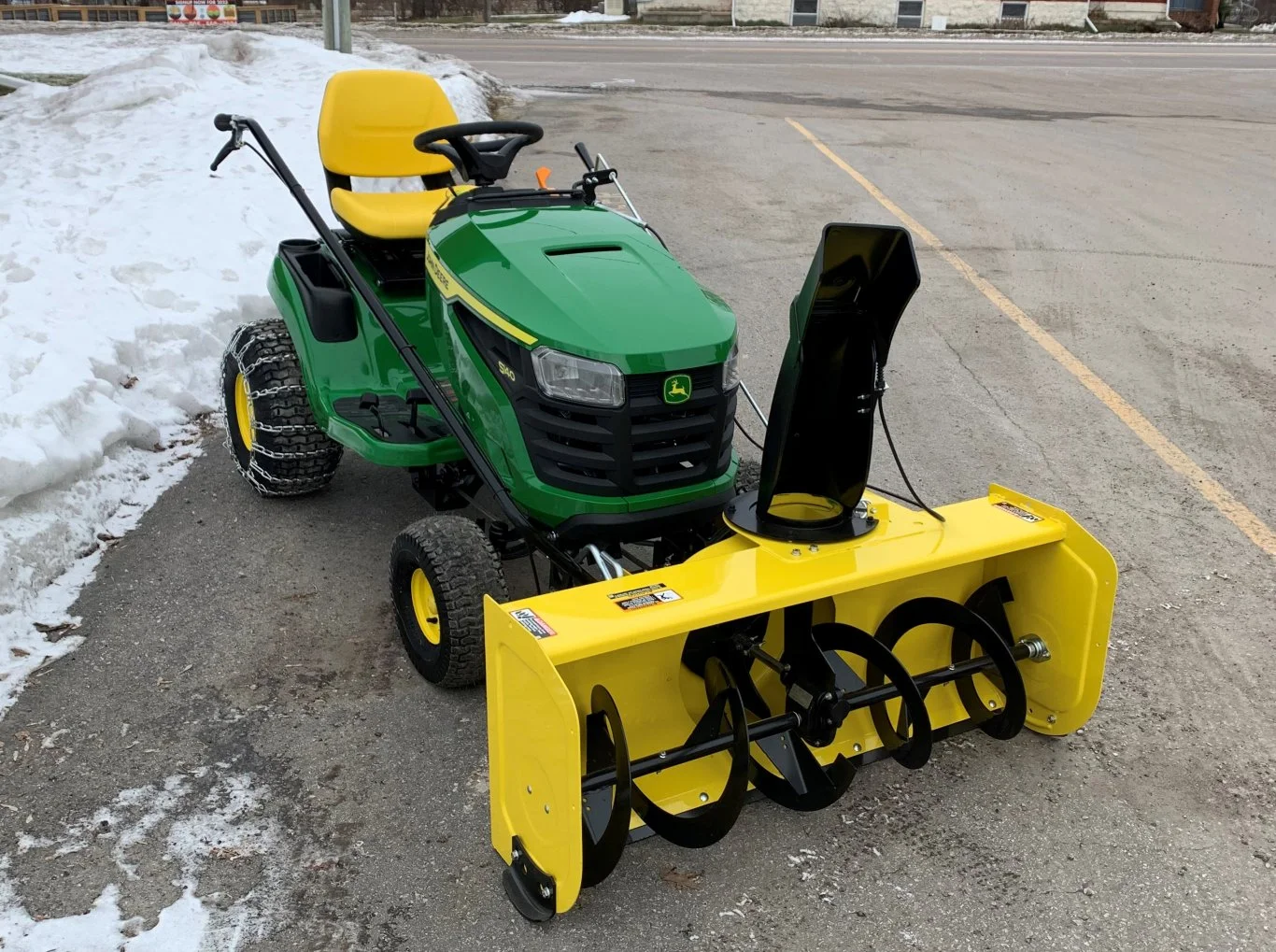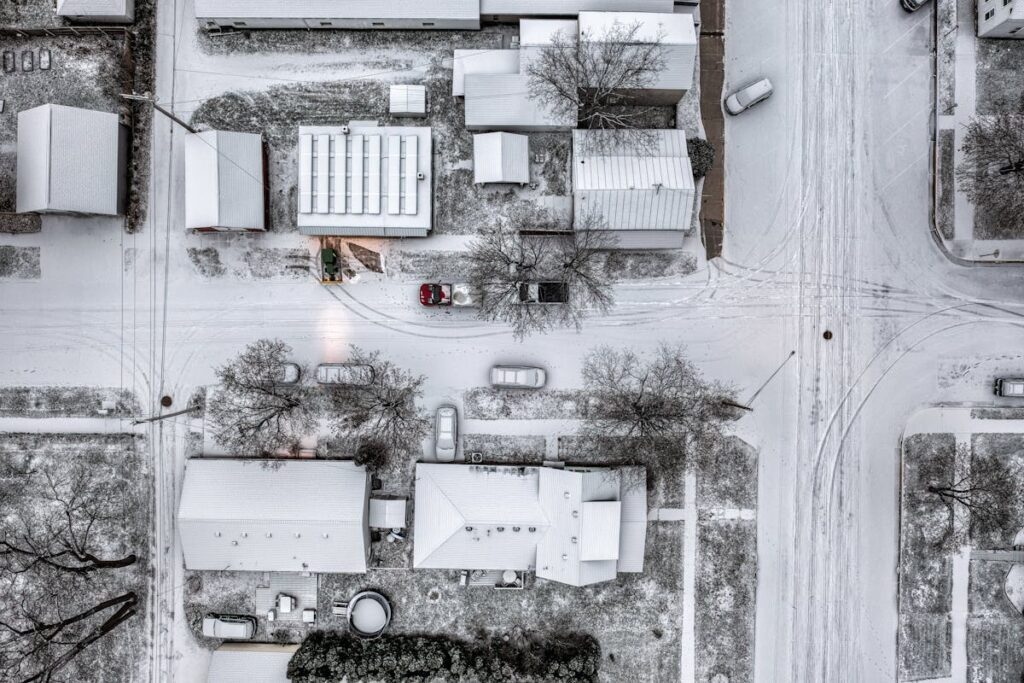Yes — research suggests that lawnmowers that can also remove snow are real, practical, and becoming more popular every year. But whether they’re the right choice for you depends on power, yard size, budget, and the kind of winters you deal with. that multi‑functional lawnmowers capable of snow removal do exist. But whether they’re the right choice for you depends on power, yard size, budget, and the kind of winters you deal with. Some homeowners swear by them. Others think they fall apart when the snow gets too deep. The truth sits somewhere in the middle.
This guide breaks down how these machines work, which models dominate in 2025, what real users think, and whether one machine can realistically replace both your mower and your snow blower.
The Rise of Year‑Round Multi‑Purpose Mowers
The idea isn’t new. People have wanted one machine that handles everything — mowing, blowing, sweeping, plowing — for decades. Early versions showed up in the 1950s and 60s when homeowners wanted more efficiency and fewer machines in the garage. But the tech wasn’t mature then.
Fast forward to today, and the market has completely changed. Modern attachments, stronger engines, better hydraulics, and robotic systems mean a single machine can mow grass in July and throw snow in January without losing performance.
The biggest shift is modular design. Instead of buying a mower and a snow blower, you buy a base machine and switch attachments. Riding mowers, stand‑on mowers, zero‑turn models, and even autonomous robots now support quick‑swap snow removal tools.
Three Types of Multi‑Function Machines
Everything on the market fits into one of these three categories.
1. Attachment‑Based Riding Mowers
These are the most common. You start with a standard riding lawn tractor, pull off the mowing deck, and mount a snow blower, blade, or broom.
The setup uses the mower’s engine to power the snow tool. Most two‑stage or three‑stage attachments can clear up to 18 inches of snow. Install time ranges from 10 to 30 minutes depending on the model.
Compatible brands include:
- John Deere (100 Series, X300, X500)
- Cub Cadet (XT1, XT2)
- DR Power Field & Brush Mowers
These systems are popular because they’re affordable and familiar. You’re basically upgrading a machine you already own.
2. All‑Season Stand‑On and Zero‑Turn Mowers
These are built for year‑round work from day one. Think commercial‑grade machines like the Toro GrandStand Multi Force or Grasshopper’s FrontMount mowers.
They use powerful hydraulics to run attachments like:
- 5‑foot snow plows
- Rotary brooms
- Snow blower units
They’re fast, maneuverable, and designed to clear tight areas where big blowers struggle. Landscapers and property managers love them because one machine can handle lawns in summer, leaves in fall, and snow in winter.
3. Robotic Modular Systems
This is the newest category, led by systems like Yarbo.
Robotic cores use AI, sensors, RTK‑GPS, and swappable modules to mow, blow snow, and clean paths with zero human effort. They handle slopes, avoid obstacles, and recharge themselves.
They’re expensive upfront but save long‑term time and labor.
How These Machines Actually Work
Almost every system uses a quick‑attach mount. For snow blowing, the mower’s engine or battery powers:
- An auger that breaks up the snow
- An impeller that throws it out the chute
For blades and brooms, hydraulics or belts control the angle, height, and motion.
Robotic units switch modules via a docking system. AI maps your property and learns how to adjust traction in winter.
The big win: one machine handles every season.
Top Models Worth Looking At in 2025
After comparing dozens of reviews and tests, these machines stand out.
Toro GrandStand Multi Force
A commercial stand‑on mower that becomes a snow plow, blower, or broom. Fast, powerful, and extremely versatile. Great for large properties or professional use.
Cub Cadet XT1/XT2 with 3‑Stage Snow Blower Attachment
A high‑value combo that clears snow faster than most attachments. Strong choice for homeowners.
John Deere 100 Series with 44‑Inch Blower
Reliable, durable, and easy to maintain. Perfect if you already own a Deere riding mower.
Grasshopper FrontMount Series
Zero‑turn maneuverability plus snow blower and blade options. Excellent for tight spaces and long driveways.
Yarbo Robotic System
The most advanced hands‑off model on the market. Swaps between mowing and blowing snow automatically.
What Users Love — and What They Don’t
Real‑world feedback is mixed, which helps set expectations.
Pros
- Saves storage space — one machine instead of two.
- More affordable than buying a separate mower and snow blower.
- Attachments handle moderate to heavy snow well.
- Robotic options eliminate manual work.
- Stand‑on models reduce maintenance and improve maneuverability.
Cons
- Very deep or wet snow can overwhelm attachments.
- Some mower engines strain under heavy winter loads.
- Conversion takes time.
- Rear‑mounted attachments can be uncomfortable for long sessions.
- Steep slopes require traction aids.
The biggest complaint: they can’t beat a dedicated snow blower in extreme conditions. But for most winters, they’re more than enough.
Performance and Maintenance Insights
Three‑stage attachments like Cub Cadet’s clear snow 25% faster than traditional two‑stage setups. Users report throwing snow up to 30–40 feet, depending on moisture.
Stand‑on mowers perform well because their traction and weight distribution are built for year‑round use.
Robotic systems win on convenience. They work in temperatures from -25°C to 60°C and handle slopes up to 36%.
To keep any system running well:
- Check belts, chains, and hydraulics each season.
- Add rear weights and tire chains for traction.
- Store attachments properly to prevent rust.
- For battery systems, winterize batteries correctly.
Safety Tips
Safety matters more with combo machines because they’re heavier than standard blowers.
Best practices:
- Clear debris before operation.
- Never unclog a chute with the machine running.
- Use gloves, boots, and safety glasses.
- Don’t rush — most accidents happen when people hurry.
For hills, add traction straps or tracks.
Are These Machines Worth It?
Here’s the simplest way to judge it:
If you own a large property, want fewer machines in your garage, and like the idea of one system doing it all — these combos make sense.
If you deal with brutal storms, deep drifts, or wet heavy snow all winter, a dedicated snow blower may still win.
Final Thoughts
Multi‑function lawnmowers that also remove snow aren’t a gimmick. They’ve been around for decades, but 2025 models are finally powerful, reliable, and versatile enough to use year‑round.
They save space, reduce costs, and simplify maintenance. Robotic options open a new level of convenience. And for moderate to heavy winter conditions, modern attachments perform far better than many people expect.
If you want one machine to handle your entire property in every season, these systems are the closest thing to a true all‑in‑one solution.
Need Reliable Snow Removal? Let Ware Landscaping Handle It
If you want winter maintenance done right, without stressing over equipment, conversions, or whether your mower can handle the storm — Ware Landscaping has you covered.
Our team uses professional‑grade equipment, fast response times, and safe techniques to keep your driveway, walkways, and property fully accessible all winter. No damage. No delays. No hassle.
Book your snow removal with Ware Landscaping today and stay ahead of every storm.








